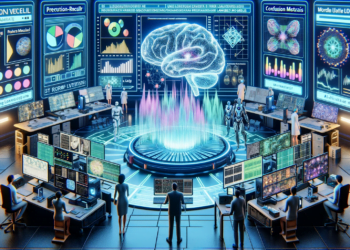Sentiment analysis and text classification are areas of artificial intelligence (AI) that have seen remarkable progress thanks to the evolution of language models. The deep understanding of texts, traditionally a challenge, is now at the forefront of practical AI applications, due to significant advancements in natural language processing (NLP) and machine learning.
Pre-trained language models: BERT and GPT
A notable innovation in the field is the introduction of Transformers, with BERT (Bidirectional Encoder Representations from Transformers) and GPT (Generative Pre-trained Transformer) leading the paradigm of pre-trained models. BERT, developed by Google, optimizes contextual understanding through a bidirectional approach, while GPT, by OpenAI, excels in text generation by examining contextual correlation in textual sequences.
The relevance of BERT lies in its ability to interpret the bidirectionality of context, which is crucial for unraveling ambiguities in sentiment analysis. Through its attention architecture, the model evaluates the relationship between all pairs of words in a sentence, providing a nuanced understanding of sentimental subtleties.
Meanwhile, successive iterations of GPT demonstrate exponential improvements in size and sophistication, enabling implementation in a broader spectrum of text classification tasks. GPT-3, in particular, has been notable for its ability to produce coherent and informative text even without the need for extensive fine-tuning.
Advances and results with T5 and XLNet
Beyond BERT and GPT, models such as T5 (Text-to-Text Transfer Transformer) and XLNet have emerged. T5 proposes a unifying approach where virtually all NLP problems are addressed as a text-to-text conversion task. This broadening of focus has proven effective in generalizing knowledge learned during pre-training, resulting in superior outcomes in sentiment analysis and classification benchmarks.
XLNet, on the other hand, introduces permutations in the word order during the training process, surpassing GPT’s unidirectional approach and BERT’s token masking. This technique allows for a richer understanding of context and greater efficacy for tasks requiring comprehension of complex relationships between textual elements.
Practical applications: Sentiment analysis in the stock market and customer service
In terms of practical applications, a relevant case study is sentiment analysis applied to the stock market. Pre-trained and finely tuned models are now analyzing massive amounts of data, from earnings reports to social media posts, to predict market movements. The accuracy of AI-based sentiment analysis provides investors with a significant competitive edge by speeding up market perception-based decision-making.
An additional scenario is customer service, where sentiment analysis is critical. Text classification systems trained with advanced models can interpret customer queries and comments, not only to categorize them by topic but also to identify and prioritize those exhibiting greater urgency or displeasure. The enhanced and personalized responsiveness directly translates into improved customer satisfaction and operational efficiency.
Future directions and potential innovations
Looking ahead, it is plausible to anticipate that approaches of even greater scale, as well as novel architectures, will continue to drive performance in sentiment analysis and text classification. The fusion of cognitive abilities, such as joint attention and long-term memory, could yield models with a deeper understanding of context and emotional state, further refining accuracy in relevant tasks.
Additionally, the emergence of explainability techniques and interpretability in AI models will strengthen the trust in AI-based decisions. The ability to justify and explain the outcomes of sentiment analysis and classification is essential to accelerate adoption in critical domains such as medicine, law, and corporate governance.
In conclusion, language models in sentiment analysis and text classification are a testament to the monumental advancement in artificial intelligence. The constant evolution of these models is not only pushing the technical boundaries but also redefining what is possible in terms of practical applications. Researchers and developers continue to explore new frontiers, seeking not only to advance the state of the art but also to effectively implement it in society.






















